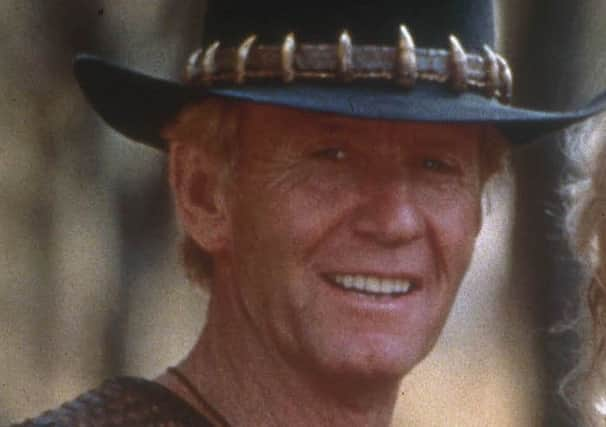Obituary: Norma Moriceau, costume designer behind looks of Mad Max and Crocodile Dundee


Norma Moriceau created the look of two of Australia’s most iconic film characters, Mad Max and Crocodile Dundee, drawing on both her background in the London punk rock fashion scene and her passion for tribal art and costume in creating designs that have proven enormously influential in popular culture.
A colourful and adventurous character, Moriceau worked as a model, photographer and fashion editor before going into films and she spent much of her life travelling around the world.
Advertisement
Hide AdAdvertisement
Hide AdShe worked with such diverse figures as the Sex Pistols, on their film The Great Rock ‘n’ Roll Swindle (1980), a young Nicole Kidman on Dead Calm (1989), Marlon Brando on The Island of Dr Moreau (1996) and Harrison Ford on the Jack Ryan thriller Patriot Games (1992), during a brief, unhappy period in Hollywood. “She was never at ease in that competitive world,” said director Phillip Noyce, director of Dead Calm and Patriot Games.
She was not involved in the first Max Max adventure, which shot on a shoestring budget in 1977, with costumes determined by whatever the crew could buy cheaply in the shops.
She came on board for the second instalment four years later. Released as The Road Warrior in the US, where the original had made little impact, it was this second film that established Mel Gibson’s post-apocalyptic drifter as an international phenomenon.
Some of Moriceau’s costumes for Mad Max 2 also came straight from the shops, but while those in the first film came from department stores, hers came from the S&M shop she passed on the way to work, and then she added various personal touches. “That made the whole look of the Mad Max films,” said director George Miller.
Moriceau took her designs to a whole new level with Tina Turner’s costume in the third film Mad Max Beyond Thunderdome (1985), described by Rolling Stone magazine as “an expressionist classic: a 32kg soldered amalgam of dog muzzles, coat hangers and chicken wire, the whole overlaid with gleaming chain-mail butcher aprons.”
She won three Australian Film Institutes awards, but never got even so much as an Oscar nomination and there was controversy earlier this year when Jenny Beavan won the Academy Award for best costume design for the fourth Mad Max film Fury Road and did not mention Moriceau in her speech, though she subsequently admitted she was “very indebted” to Moriceau’s earlier work.
Born in 1944, Moriceau spent her early years in Sydney and in Wollongong, a seaside city about 50 miles to the south. By her mid-teens she was getting modelling work. Like many Australians at the time she looked to pursue her career in England, where she worked as a waitress between modelling jobs. She also began getting work styling fashion shoots for newspapers and magazines.
She became friends with fashion designer Vivienne Westwood and her partner Malcolm McLaren, with whom Westwood ran a boutique in the King’s Road that eschewed glitz and pioneered the style of dress that would be adopted by the punk rockers of the mid-1970s. Moriceau took the iconic photo of Westwood in a torn tee-shirt with a swastika and the word “destroy” on it.
Advertisement
Hide AdAdvertisement
Hide AdMcLaren was instrumental in putting together the punk rock band The Sex Pistols. Most of them were customers in his SEX fashion boutique and bassist Glen Matlock worked there part-time. A few years later, after they became an international phenomenon, Moriceau was costume designer on their feature film The Great Rock ‘n’ Roll Swindle.
In the meantime she had returned to Australia and launched her career as a film costume designer on Journey Among Women (1977).
The video sleeve promises “savagery and passion amongst the wild women convicts of early Australia”, though the bare-breasted woman in the picture is wearing little in the way of a costume.
More auspiciously she began a long association with director Phillip Noyce on the 1978 film Newsfront, part of the “new wave” of Australian cinema that garnered international acclaim and launched several stellar careers in front of and behind the cameras.
After defining the image of Mad Max, Moriceau helped transform the middle-aged comedian Paul Hogan into an unlikely major international star in Crocodile Dundee (1986), after kitting him out in a battered brown leather waistcoat and a black hat, the band of which is decorated with crocodile teeth.
Mad Max director George Miller said: “Arguably the two most iconic characters to emerge from Australia, at least in international terms, are Croc Dundee and Mad Max. And I think that was her mastery, to create iconic characters.Directors channelled her vision. She’d work with the actors and characters and played with it, always somehow finding that extra special look.”
Talking of her work on Dead Calm, Phillip Noyce said: “She made a 19-year-old Nicole Kidman into an icon with those leg-exaggerating shorts and loose-fitting shirt accentuating her body shape in ways that dreams are made of.”
Her other films included Something Wild (1986), The Punisher (1989), Babe: Pig in the City (1998), The Quiet American (2002) and most recently Beyond Borders (2003), with Angelina Jolie.
Advertisement
Hide AdAdvertisement
Hide AdMoriceau lived for periods in Mexico, Kenya and Rajasthan. Wherever she worked or travelled, she relished a return to her beloved New South Wales. She had a flat in Sydney, but also a “humpy”, a make-shift home built from “found items”, in the countryside.
Despite moving in a world of celebrities, she remained a deeply private person and never married or had children.
BRIAN PENDREIGH